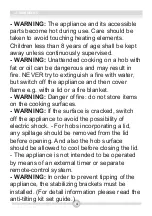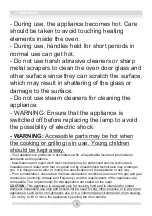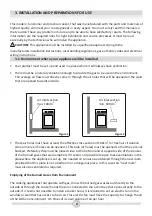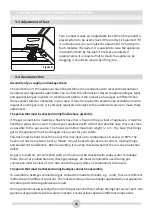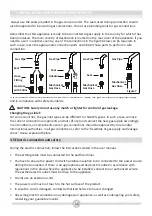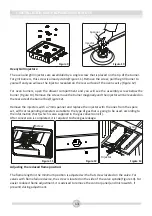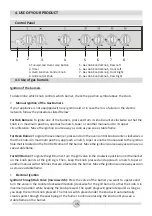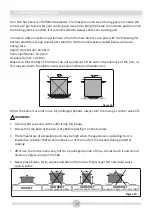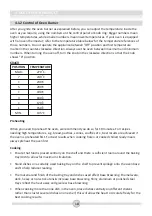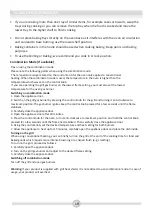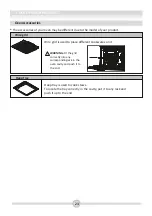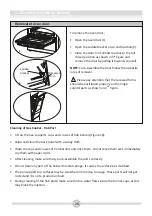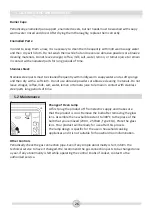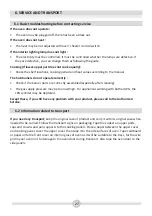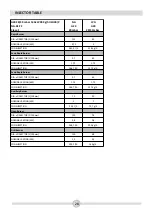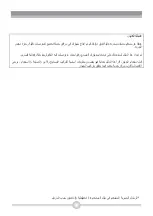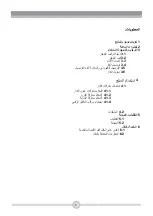
Preheating
When you need to preheat the oven, we recommend you do so for 10 minutes. For recipes
needing high temperatures, e.g. bread, pastries, scones, soufflés etc., best results are achieved if
the oven is preheated first. For best results when cooking frozen or cooked chilled ready meals
always preheat the oven first.
Cooking
• Ensure that food is placed centrally on the shelf and there is sufficient room around the baking
tray/dish to allow for maximum circulation.
• Stand dishes on a suitably sized baking tray on the shelf to prevent spillage onto the oven base
and to help reduce cleaning.
• The material and finish of the baking tray and dishes used affect base browning. Enamel ware,
dark, heavy or non-stick utensils increase base browning. Shiny aluminum or polished steel
trays reflect the heat away and give less base browning.
• When cooking more than one dish in the oven, place dishes centrally on different shelves
rather than cluster several dishes on one shelf, this will allow the heat to circulate freely for the
best cooking results.
4.1.2 Control of Oven Burner
After you ignite the oven burner as explained before, you can adjust the temperature inside the
oven as you require, using the numbers on the control panel or knob ring: Bigger numbers mean
higher temperatures, while smaller numbers mean lower temperatures. If your oven is equipped
with an oven thermostat; refer to the temperature table below for the temperature references of
those numbers. Do not operate the appliance between "Off" position and first temperature
markerin the counter-clockwise direction. Always use the oven between maximum and minimum
numbers. When turning the oven off, turn the knob in the clockwise direction so that the knob
shows "0" position.
18
4. USE OF YOUR PRODUCT
60x60
TEMPERATURE
145
0
C
POSITION
MAX.
270
0
C
7
240
0
C
•
230
0
C
5
200
0
C
•
190
0
C
3
180
0
C
•
170
0
C
1
150
0
C
MIN.

